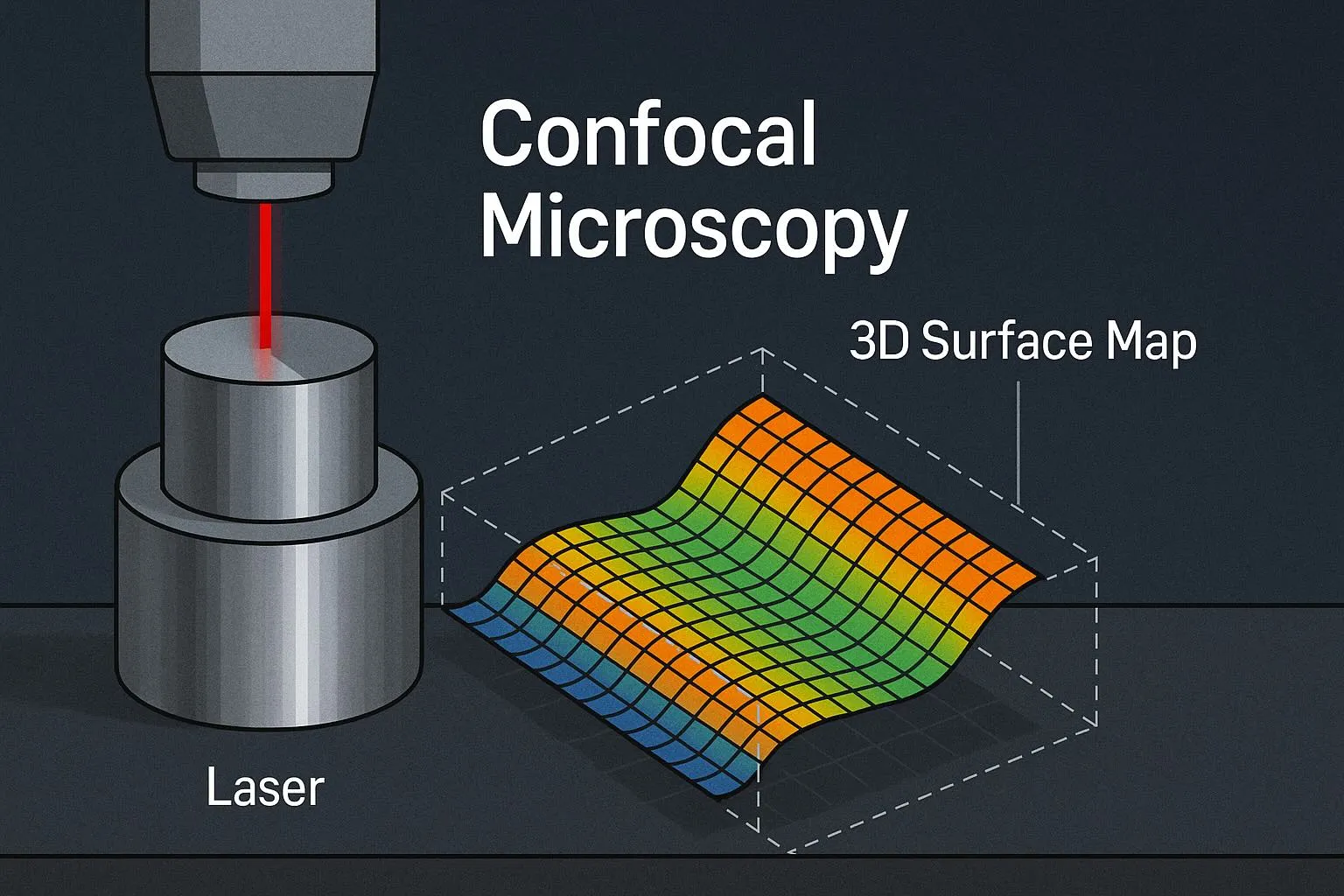When we think about machined parts, the focus is usually on what we can see: clean edges, polished surfaces, precise dimensions. But many of the most important details are invisible to the naked eye — microscopic scratches, surface roughness, or defects smaller than a human hair.
This is where confocal microscopy comes in. Originally developed for biomedical imaging, it’s now a powerful tool in advanced manufacturing, letting us see details that traditional inspection methods miss.
What Is Confocal Microscopy?
Confocal microscopy uses a focused laser beam that scans across the surface of a part. Unlike a standard optical microscope, it blocks out-of-focus light using a pinhole, capturing only what’s at the exact focal plane. By moving the focus point up and down, it builds a 3D map of the surface.
Think of it like “stacking” razor-sharp images together to reveal fine topography in stunning detail.
Why It Matters for Machined Parts
Confocal microscopy can measure things that matter a lot in precision engineering:
- Surface roughness: Determines how well parts fit together, seal fluids, or reduce friction.
- Micro-cracks: Early-stage cracks invisible to standard inspection can be caught before they grow.
- Step heights & dimensions: Useful for verifying micromachined features or delicate geometries.
- Coatings & films: Thickness and uniformity can be inspected without damaging the part.
Real-World Applications
Confocal microscopy isn’t just academic — it has practical roles across industries:
- Aerospace: Inspecting turbine blades for microscopic wear that could lead to catastrophic failure.
- Medical devices: Ensuring implants or surgical tools have biocompatible surface finishes.
- Optics: Checking lens mounts or reflective surfaces for nanoscale scratches that impact performance.
- Electronics: Verifying microelectromechanical systems (MEMS) or fine connectors.
Advantages Over Other Methods
Compared to other surface inspection tools, confocal microscopy offers:
- Non-contact measurement → no risk of scratching or contaminating the part.
- High resolution → down to nanometer scale.
- 3D mapping → gives a full surface profile, not just a single measurement point.
While techniques like tactile profilometry or scanning electron microscopy (SEM) are useful, confocal microscopy strikes a balance: fast, precise, and non-destructive.
Wrapping Up
At Ziqual, we’re always interested in how advanced metrology tools can improve quality and reliability. Confocal microscopy shows us the invisible world of surfaces — giving engineers confidence that their parts don’t just look right, but perform right.
When tolerances are tight and stakes are high, seeing the invisible makes all the difference.
